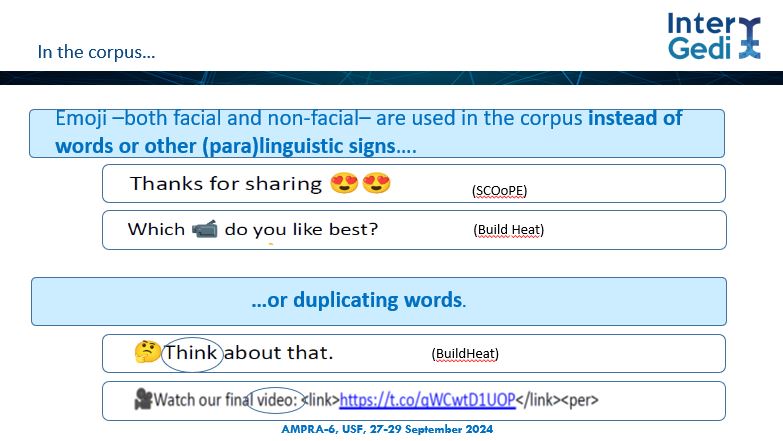AMPRA-6: Silvia Murillo examines the use of emojis in research projects’ tweets

Dr. Silvia Murillo was a participant in the 6th International Conference of the American Pragmatics Association, which took place virtually from the 27th to the 29th of September.
Her paper was titled “The use of emoji in Twitter/X for research dissemination purposes”, and in it she explored the use of emojis in a set of tweets from 10 H2020 research website Twitter accounts. Silvia explained how she used a relevance-theoretic perspective in order to examine how emojis contribute to the dissemination of the projects’ results and to their promotion. Her findings revealed that the emojis used in the tweets examined mainly helped to reinforce the projects’ messages and to engage with their audience.
You can click here to read more about our members’ participation in this event. You can read Silvia’s abstract below:
The use of emoji in Twitter/X for Research Dissemination Purposes
Along with their websites, international projects use social media in their dissemination and communication activities, specifically Facebook and Twitter/X. In their Twitter/X accounts, emoji often appear in the tweets, performing different functions (Scott 2022, Yus 2022). In this paper I will examine a subset of the EUROPROtweets database (https://intergedi.unizar.es/europro-digital-corpus/) that comprises 10 Twitter accounts associated to H2020 research websites, coded through NVivo.
I will provide a comprehensive corpus-driven account of how the emoji contribute to building the messages, from a relevance-theoretic perspective (considering the different stages in the process of utterance interpretation). Emoji can be used instead of words, or they can be used following or preceding words in a process that resembles verbal reformulations. I will draw from the notion of perceptual resemblance as used by Sasamoto (2022) and take into account Scott’s (2022) and Yus’s (2022) explanations of some of the uses of the emoji, along with some insights from previous accounts of reformulation processes in verbal language (Blakemore 1996, Author). The emoji used in the messages are in general associated with the keywords of the projects and with their research activities, contributing to the dissemination of their results and to their promotion.
Essentially, through different pragmatic processes, the emoji are used to reinforce the messages and contribute to their engagement. Some examples from the corpus also point to the polyfunctionality of emoji, as they may include additional discourse roles, such as topicalizing and discourse organizing functions.
References:
Blakemore, D. (1996). Are apposition markers discourse markers? Journal of Linguistics, 32(2), 325-347.
Sasamoto, R. (2022). Perceptual resemblance and the communication of emotion in digital contexts: A case of emoji and reaction GIFs. Pragmatics, 33(3), 393-417. https://doi.org/10.1075/prag.21058.sas
Scott, K. (2022). Pragmatics Online. Oxon: Routledge.
Yus, F. 2022. Smartphone Communication. Interactions in the App Ecosystem. London: Routledge.
